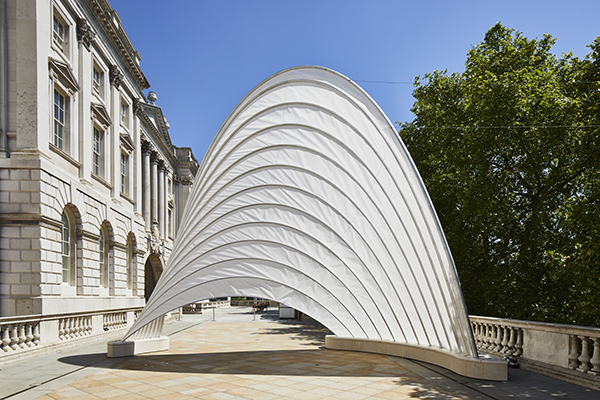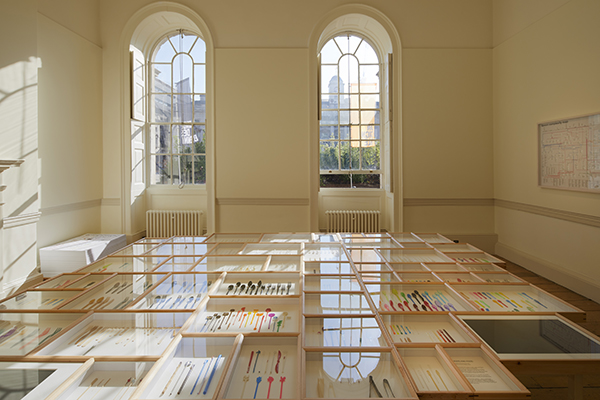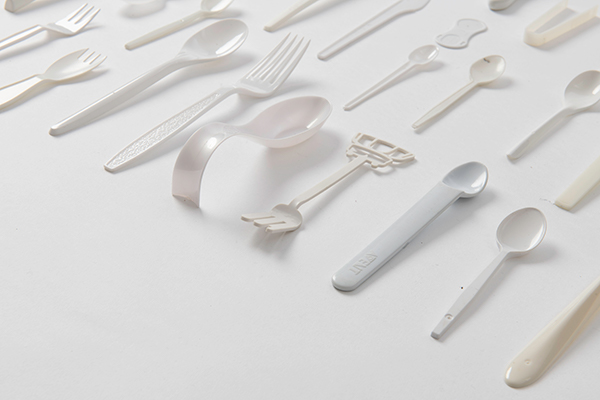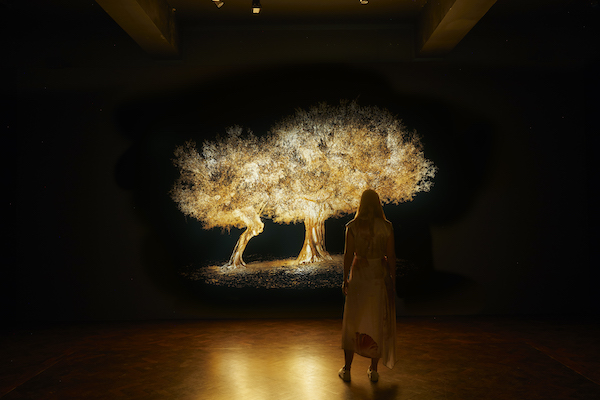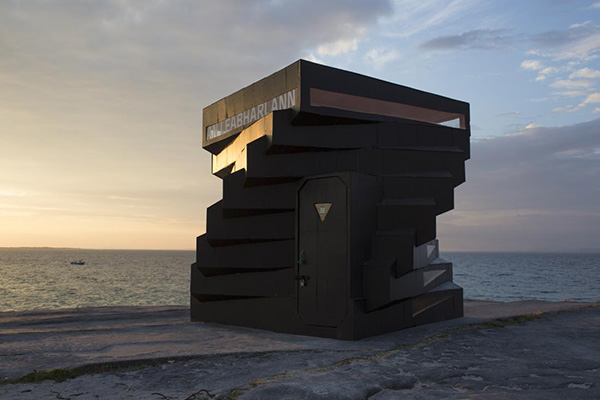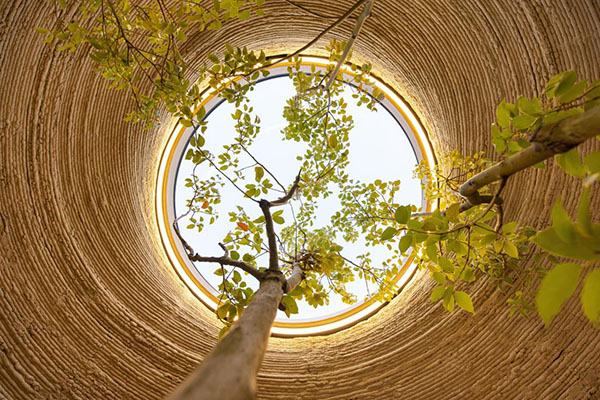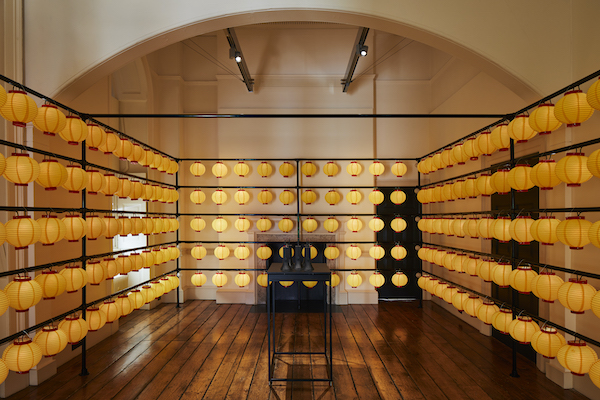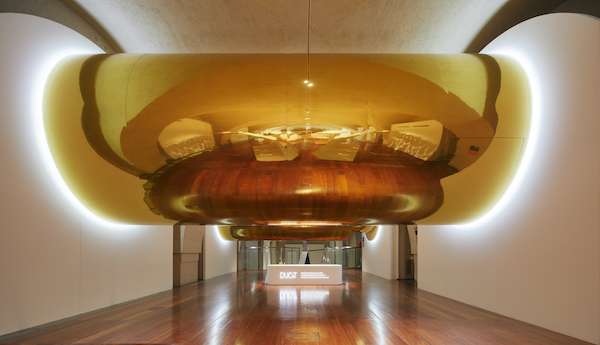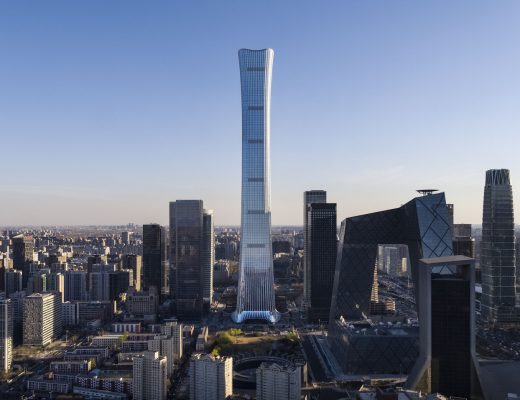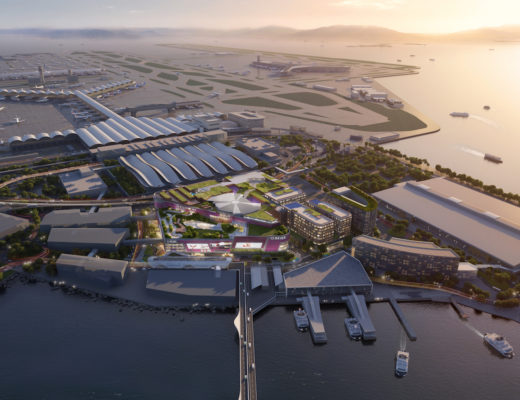The third edition of London Design Biennale explores the vital role of design in addressing challenges and providing solutions, bringing participants together to formulate and exchange ideas around the major issues of our time: from the pandemic to climate crisis, cultural heritage to social equality. The event will bring together 38 exhibitions from across six continents responding to the theme ‘Resonance’, and artistic director Es Devlin’s call to action: “How can design provide solutions to the major challenges and crises the world faces today?” The venue of the biennale, Somerset House, has been transforming into a forest (pictured above) with the addition of 400 juvenile trees. These have been individually selected for their differing canopy shapes, heights and forms.
Inside Somerset House visitors will find physical pavilions and digital presentations from six continents exploring sustainability and the environment, globalisation and migration, culture and history. While the Global Goals Pavilion invites visitors to discover the 17 Global Goals for Sustainable Development – a plan adopted by all UN member states in 2015 to end poverty, fight inequality and tackle climate change by 2030. At the heart of the Forest, visitors can record a short message expressing the change they wish to see in the world, which will be added to a generative music installation playing in the central clearing and sent to them digitally too.
Designed by Ms Devlin, in collaboration with landscape designer Philip Jaffa and urban greening specialists Scotscape, the outdoor experience is presented in partnership with Project Everyone, a not-for profit agency founded by Richard Curtis, Kate Garvey and Gail Gallie to further awareness and engagement with the Global Goals. The project has received specialist support from John Cullen Lighting, Autograph sound and Corticeira Amorim. Production for the forest has been supervised by sustainable production specialists Beautiful Wonder.
Some of these pavilions are highlighted below:
UNIVERSITY OF CAMBRIDGE – UNFOLDING
Unfolding examines the potential for using engineered timber for the production of flexible housing. Through Unfolding, the Centre for Natural Material Innovation at the University of Cambridge, and PLP Architecture seek to show a range of creative possibilities when we work in collaboration with nature and natural materials, cultivating the materials we can grow for a built environment in which we can thrive.
THE SAIL – PAVILION OF THE AFRICAN DIASPORA
“My intent with the pavilion was really to use the skills that I have to be of benefit to the multitude of people that represent the diaspora, a culture that has so often been marginalised, for them to express themselves.”
Ini Archibong
In this spirit, Archibong designed the Pavilion of the African Diaspora as a global stage centred on the voices and contributions of people born of the African Diaspora.
GERMANY – SPOON ARCHAEOLOGY
In a multimedia installation, designers Peter Eckart and Kai Linke will display a collection of disposable cutlery, staged as archaeological artefacts, design curiosities, and anthropological witnesses of an era that is about to end. Their presentation was prompted by the EU ban on plastic cutlery, which comes into effect on 3 July in 2021, meaning that these single-use tools will soon become artefacts of our recent past.
GREECE – TOGETHER
Greece creates an enchanted, immersive scene of illuminated, embracing olive trees reflected in mirrors and surrounded by sounds of Greek nature, encouraging us to contemplate feelings of origin, connection and separation.
INDONESIA – The INVISIBLE: FREE THE SPACE
Indonesia offers an investigation into how the indigenous community faces shortcomings in their modern domestic space. By entering the imagination of the inhabitants, The Invisible: Free the Space! addresses how design needs to be a catalyst for inclusivity and social equality.
GHANA – AMPLIFY
Amplify develops a concept which explores the engagement between Ghana, Great Britain, and Denmark over four centuries. In this exhibition, the ‘what ifs’ and ‘maybes’ of an imaginary balanced cultural interchange of ideas and trade are considered.
INDIA – SMALL IS BEAUTIFUL: A BILLION STORIES
Small is Beautiful hopes to be a catalyst for building the ecosystem for innovation in sustainability, while harnessing the power of design to address the critical needs of India and the world today for clean water, clean air, clean earth, and clean energy.
IRELAND – AN LEABHARLANN
An Leabharlann is a library at the edge of the Ocean, situated on Inis Oírr just off the west coast of Ireland and created by the island residency Drop Everything. The construction of An Leabharlann is rendered here as an interactive model, through which users can explore the landscape and a digital archive of the collection through an AI-assisted image search tool.
ITALY – TERRA
Terra (earth) is a short movie that tells a story about our capacity to adapt to climate challenges, making the most of the oldest material in history – earth – to find light in the darkness of tomorrow and, if necessary, turn it on. Terra shows what can be accomplished if we mindfully combine our technical knowledge with learnings from the past.
NEW YORK CITY – RECHARGE ROOMS
Studio Elsewhere created the Recharge Rooms during the global COVID-19 pandemic. Working alongside their scientific and clinical partners at Mount Sinai Hospital in New York City, the aim of these interactive design interventions was to support the mental health of frontline workers.
NORWAY – THE RIPPLE EFFECT: CONNECTING PEOPLE & NATURE
Norway’s name comes from the sea: the northern way. Through talks and footage, Norway’s digital participation will take visitors on a tour that travels from the most southern point of the country to the far north. Along the way, you’ll experience marine life, impressive architectural constructions and the sustainable and inclusive possibilities of designing with nature.
RUPP & FORM – QUIET GARDEN
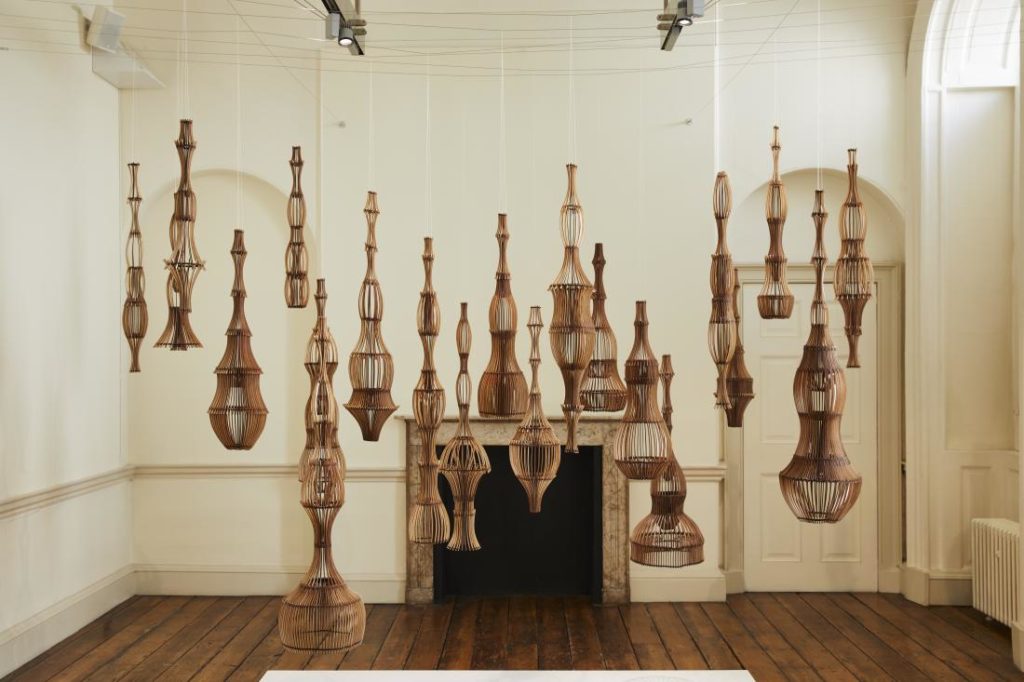
This contemplative installation has been developed with sustainability at its core and aimed to respond to nature’s resonance – a symphony of silence and sound. The magical sinuous play with light and shadow, nourishing a conversation.
TAIWAN – SWINGPHONY
The swinging pendulum of a metronome creates “Swingphony”, a warm-hearted melody from Taiwan to the world. This melodious concerto of goodwill, faith, and compassion resonates with us all.
ANTARCTICA – COLD FLUX
Highlighting the peril of our global icecaps, Ben Cullen Williams’s installation questions if the melt is irreversible or whether there is hope if we act now. Cold Flux is a three-channel AI-generated video installation created from footage Williams filmed of the Larsen-B Ice shelf whilst on an expedition to Antarctica with polar explorer Robert Swan. The ice shelf splintered off from the Antarctic peninsula in 2002 and has been disintegrating since. This footage, in collaboration with creative technologist Bryce Cronkite-Ratcliff, was used to train machine learning algorithms to generate the video landscapes which visually seemingly exist within a state of melting and freezing, forming and un-forming.
CANADA – DUCkT
DUCkTis a metaphor for our willingness to ‘bend’ to the ever-growing energy demands of mechanical systems in inefficiently designed buildings. The inspiration for the Canadian installation comes from a self-reflection of the reliance on indoor micro-climate systems in the building sector at the expense of the wellbeing of our planet. The designers were struck by the overwhelming reality of current climate change predictions, and the urgent need to address the rapid growth in inefficient and carbon-intensive buildings. Revery’s design aims to spotlight Canada’s reliance on artificial heating and cooling systems due to the country’s diverse climate, and the necessity to question its viability in the future.
CZECH REPUBLIC – PLANES OF PERCEPTION
Petr Stanický’s Planes of Perception calls for a reassessment of the human axial bodily experience of space in favour of a variation of other options, allowing visitors to perceive reality in a way in which we have forgotten to perceive it in the course of time.
ARGENTINA – MONTE ABIERTO
In Monte Abierto, designer Cristian Mohaded invites visitores to the weaving of a shared territory that unfolds from his long-standing relationship with the artisan Lorenzo Reyes and the Simbol, a plant that grows in the northwest of Argentina’s Calchaquí Valleys in Catamarca.
You might also like:
11 Asian and Middle Eastern pavilions at the Venice Biennale 2021



